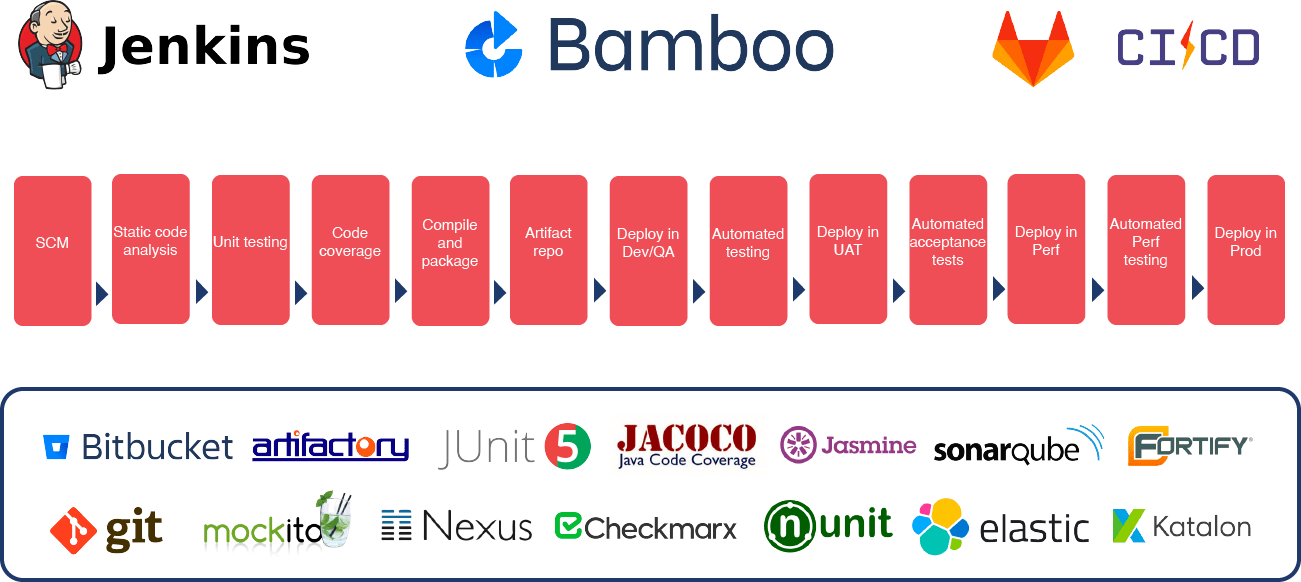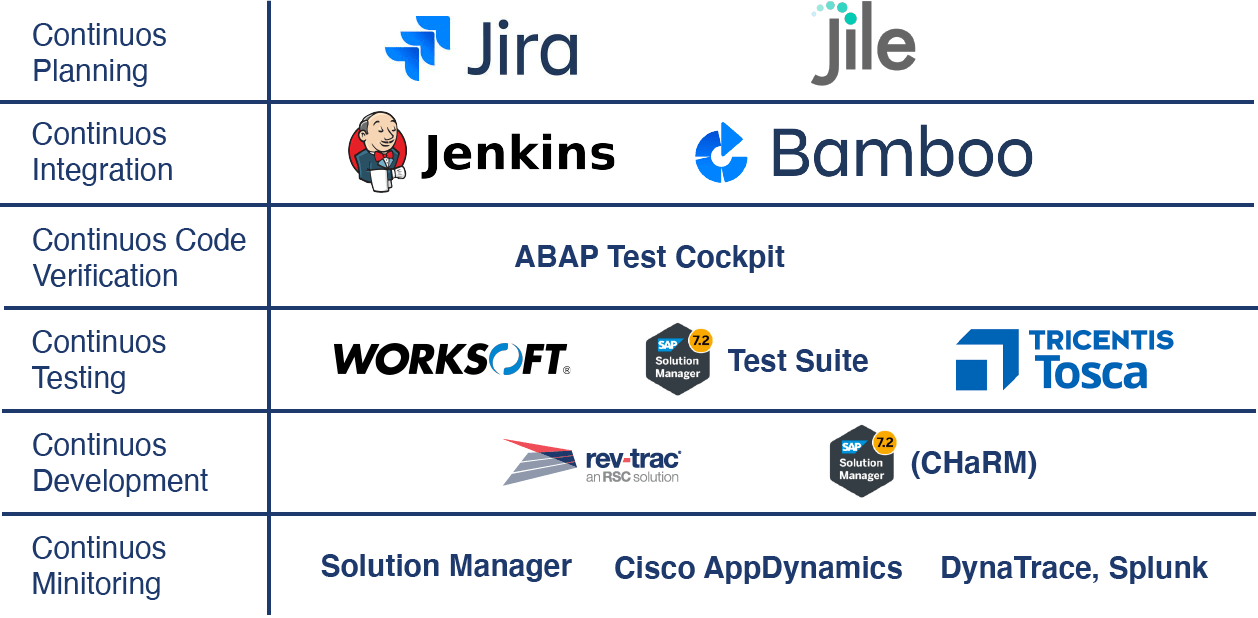As businesses expand rapidly to cater to the ever-demanding needs of consumers, making software development and operations more efficient must be a priority. Coupled with this is an increasing demand for rapid software development across industries to meet business expectations.
DevOps is widely considered the answer to meeting demands for efficient and effective software development. According to a 2020 Global Market Insights report, the DevOps market is expected to reach $17 billion by 2026. This highlights the appeal of shorter development life cycles, fewer deployment failures, more efficient communication, and reduced costs are undeniable. DevOps is no longer an option but an imperative for companies.
 The choice of tools depends entirely on their landscape and preferred solution for a DevOps implementation.
The choice of tools depends entirely on their landscape and preferred solution for a DevOps implementation.
 The fundamental challenge for organizations implementing DevOps tools is that the SAP on-premises ERP Core Component is a closed system with a few interfaces exposed for integrating the software development tools.
Furthermore, many organizations don’t use ABAP Git for the source code repository. The source code is commonly maintained in the SAP application server. A CI/CD pipeline tool must integrate with ABAP Test Cockpit to validate the source code. This integration needs to be developed, resulting in additional effort costs.
The fundamental challenge for organizations implementing DevOps tools is that the SAP on-premises ERP Core Component is a closed system with a few interfaces exposed for integrating the software development tools.
Furthermore, many organizations don’t use ABAP Git for the source code repository. The source code is commonly maintained in the SAP application server. A CI/CD pipeline tool must integrate with ABAP Test Cockpit to validate the source code. This integration needs to be developed, resulting in additional effort costs.
How DevOps works
As we know, DevOps is more than just technology. It encompasses a set of practices that help bring development and operations teams together to streamline software delivery.DevOps breaks down the silos that development and operations teams traditionally work in, creating a unified delivery channel.Increased automation and collaboration accelerates the feedback cycle, prevents waste, reduces delays, and makes the software produced more efficient and reliable. Continuous integration and continuous delivery (CI/CD) are pillars of a successful DevOps implementation. Continuous integration involves developers integrating code into a shared repository multiple times daily. An automated build verifies each check-in, enabling earlier identification of defects. It doesn’t eliminate bugs but makes them far easier to find and remove. Continuous deployment is the release into production of software verified by the automated tests. An efficient pipeline for automating the build, integration, testing, and deployment processes is needed to maximize the benefits of your CI/CD model. This requires the right tools. In a typical non-SAP landscape, our customers use the following tools:
 The choice of tools depends entirely on their landscape and preferred solution for a DevOps implementation.
The choice of tools depends entirely on their landscape and preferred solution for a DevOps implementation.
What does DevOps look like in an SAP environment?
DevOps concepts such as risk-based governance, culture shifts, shift left, agile, automation etc., also apply in an SAP environment. However, the main difference is the tools SAP-using organizations adopt to automate the software development lifecycle. Here are some tools that are typical in an SAP environment. The fundamental challenge for organizations implementing DevOps tools is that the SAP on-premises ERP Core Component is a closed system with a few interfaces exposed for integrating the software development tools.
Furthermore, many organizations don’t use ABAP Git for the source code repository. The source code is commonly maintained in the SAP application server. A CI/CD pipeline tool must integrate with ABAP Test Cockpit to validate the source code. This integration needs to be developed, resulting in additional effort costs.
The fundamental challenge for organizations implementing DevOps tools is that the SAP on-premises ERP Core Component is a closed system with a few interfaces exposed for integrating the software development tools.
Furthermore, many organizations don’t use ABAP Git for the source code repository. The source code is commonly maintained in the SAP application server. A CI/CD pipeline tool must integrate with ABAP Test Cockpit to validate the source code. This integration needs to be developed, resulting in additional effort costs.

